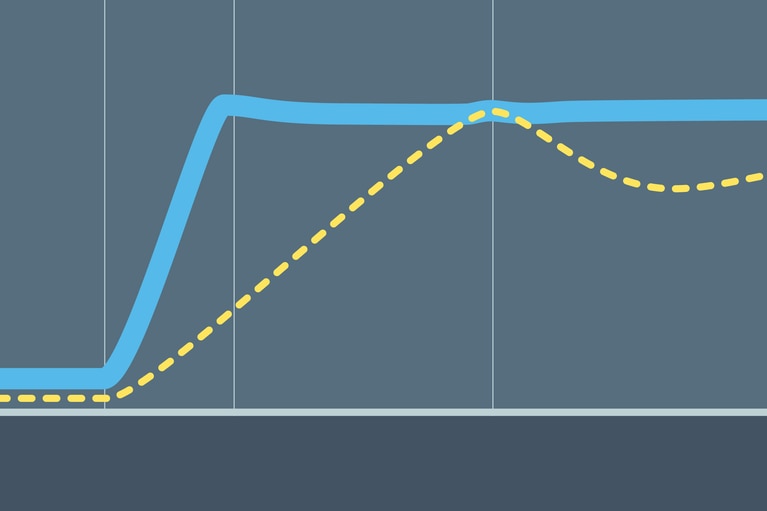
ReVolt – 技術問答
ReVolt 正在解决好莱坞片場的排放問題,下一步將把可擕式 DC 電源應用於建築工地、應急回應事件等領域
尊敬的用戶:
為了改進 Vicor 網站,我們將於美國東部時間 12 月 29 日上午 11:30 至下午 2:00 對網站進行維護。
在此期間,您可能無法查看網站的某些部分,特別是產品頁面和產品型號清單。
對於給您帶來的不便,我們深表歉意,並感謝您的耐心等待。
– Vicor 網站團隊
For a graphic illustration of why power sequencing is essential, consider what could happen in a large industrial system if its motors and actuators became energized before its control electronics. Clearly, the potential for such unpredictable and dangerous scenarios must be eliminated with carefully-designed power start-up sequences. And shutdown sequences are equally as important.
Incorrect power sequencing can cause problems at the semiconductor as well as at the system level: these conditions could lead to unexpected reverse bias across a CMOS device. This can damage or destroy the device, or latch it into an ON state that can only be released by power cycling. Although blocking diodes can prevent latch-up, they can limit the usable analogue input voltage range, so supply voltage start-up sequencing is the preferred solution. Additionally, multi-voltage devices such as DSPs and microprocessors usually require their I/O voltage to be present before applying the core voltage. Intel processor chip documentation typically specifies start-up and shut-down sequences that must be followed. Similarly, CPU chips must be powered up before systems graphics ICs to prevent uncontrolled outputs to the graphics display.
There are two typical approaches to power sequencing; one based on power and the other on logic.
The Power solution uses the voltage rise in one power rail to send a suitably delayed trigger signal to an N-channel MOSFET, which controls the supply to the second power rail. The Logic approach is based on using Enable or other logic pins on power train devices rather than controlling the power to them. Using the logic integrated in power components provides a lower-cost, more compact and simpler solution, but in more demanding applications, MOSFETs permit more accurate control of turn-on time.
Fig 1 below shows a basic MOSFET sequencing circuit using an N-channel MOSFET and a comparator. VREF sets the threshold for switching VCC2, with VCC2 turning on after VCC1 with a delay set by the RC network. The MOSFET driver includes a charge pump to ensure that VGS exceeds VCC2 by several volts; this fully enhances the MOSFET switch. This circuit also ensures that VCC2 shuts down when VCC1 does, however the RC network means that VCC2’s shutdown will lag VCC1’s. Another issue can arise if VCC1 is not available for use as a reference voltage.
Figure 1 – Power sequencing using an RC network, comparator and MOSFET driver
More highly integrated and easier solutions are available, such as the example shown below in Figure 2.
Figure 2 – Power sequencing with the MAX6819
The sequencer ensures that the MOSFET always has the minimum required VGS enhancement, which minimizes loss in the MOSFET and ensures a low drain-to-source impedance (RDS(ON)). The MAX6819 imposes a factory-set delay time of 200ms, which occurs after the primary voltage rises above the set threshold and before enabling the charge pump to drive the external MOSFET switch.
Vicor voltage regulator, VI Chip and Brick products can be sequenced by the MOSFET circuits above. Alternatively, they can often be managed through their control pins and internal logic as mentioned earlier. In one simple arrangement, a ‘soft start’ output from one device can be connected to the logic enable/disable pin of another, effectively controlling its power sequencing. Additionally, many Vicor devices have a voltage control pin, or trigger. If a ramp voltage is applied to this pin, the device’s output will ramp to track the voltage control input, but with a fixed time delay.
ReVolt – 技術問答
ReVolt 正在解决好莱坞片場的排放問題,下一步將把可擕式 DC 電源應用於建築工地、應急回應事件等領域
雙向供電與快速瞬態回應能力賦能可擴充的主動懸架系統
正弦振幅轉換器™ (SAC™) 模組憑藉其獨特的雙向供電功能與瞬態回應速度組合,為主動懸架系統開闢了全新可能性
提供更高的峰值功率和更快的動態瞬態回應,實現更輕、更强大的電動汽車架構
隨著時間的推移,市場上的電動汽車(EV)對電驅動系統的依賴程度日益加深,例如線控轉向、線控制動以及主動懸架系統等
電流倍增器:為 AI 處理器及其他嚴苛應用供電的明智之選
AI 處理器需要解决低電壓、高電流的嚴苛挑戰,這將會導致電源系統設計產生瓶頸。瞭解 Vicor 的電流倍增技術如何改變這一現狀




